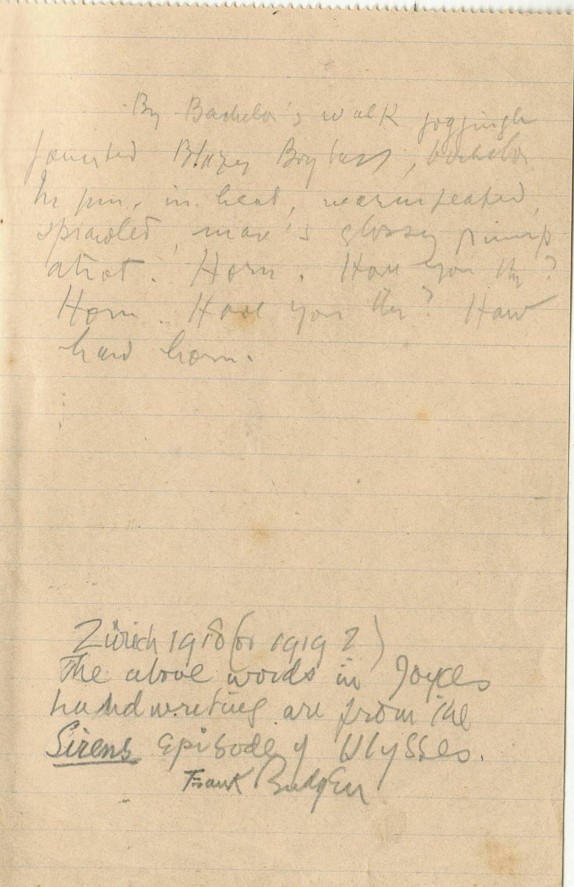Some of the main modules of the International Space Station are OKASANNOANARU-02nearly a quarter-century old. "That's considered classic for a car," said Bennett Maruca, an astronomer and physicist at the University of Delaware.
So it's little surprise one of the earliest chambers, attached in 2000, has sprung a problematic leak. The leak is in Russia's Zvezda service module, an area connecting the module to a docking port, and it was first detected five years ago. But the rate of leakage has increased in 2024, and in April, NASA revealed it had reached the highest level yet, at three times the leakage observed in 2019. In a recent Inspector General's report, the space agency labeled these cracks and leaks a "top safety risk."
The leaking hull has earned understandable scrutiny from both NASA and the Russian space agency. "NASA and Roscosmos continue to evaluate onboard and ground test data with the primary goal of identifying the root cause, gaining a better understanding of the risk to station operations, and implementing repairs," a spokesperson from Johnson Space Center told Mashable.
"That's considered classic for a car."
The problem exemplifies how NASA is contending with aging but critical space infrastructure: The orbiting laboratory, with a living area larger than a six-bedroom house, is the agency's only way to learn about health impacts to astronauts, develop or test life support systems for future missions, and advance a plethora of space technologies. NASA wants to keep it running until 2030 — but doing so will require constant surveillance and, literally, patching.
"It's an old station, and it has done some amazing things," Don Platt, an associate professor of space systems at Florida Tech, told Mashable.
 An image from 2000 showing the early stages of the International Space Station. The Zvezda service module is the module on the left. Credit: NASA
An image from 2000 showing the early stages of the International Space Station. The Zvezda service module is the module on the left. Credit: NASA The space station is actually designed to leak — a little.
That's because it has eight ports for spacecraft, meaning eight hatches that must open and close. So a negligible level of leaking was always expected, because no seal, however tight, is perfect. The only way to eliminate any leakage and preserve finite air would be to weld the openings shut. "But that would be a pretty useless space station," Maruca told Mashable.
The increased leakage rate, however, could be coming from cracks in different parts of the Zvezda service module. Space station personnel are sleuthing for potential culprits. "Cosmonauts aboard the space station have performed inspections of the module’s interior surfaces with an instrument that can detect even the most minor surface blemishes," NASA's spokesperson said, adding "There are several areas of interest identified subject to future Roscosmos inspections." Already, the Russian agency has applied sealant to some cracks, leading to some leak reduction, and for years a Zvezda tunnel hatch has been kept closed as much as possible between dockings, sealing off that section to reduce leakage. (The space agencies do not currently agree on the potential causes of the leak, according to NASA’s ISS Advisory Committee.)
These present leaks are microscopic, which is why NASA has concluded they're not an immediate risk to the structural integrity of the station, nor to astronauts. Unlike in some Hollywood depictions, a small hole in a space station or airplane wall won't result in a rapid and dramatic depressurization event. The air pressure aboard the station is 14.7 psia (pounds per square inch absolute), which is not nearly enough pressure on a small hole (even as wide as an inch across) to, for example, suck a person out of the station and into the vacuum of space.
But valuable, finite air is still being lost. Fortunately, the station orbits Earth, so it's regularly resupplied with oxygen, water, food, clothing, and beyond. The space station's current air loss is similar to the stubborn, but fixable, slow leak we've all experienced in our car tires. "It's a slow leak that allows you to get to the gas station in time," Platt said. "It's not the big hole you get when you run over a sharp piece of metal on a highway."
(Though a crewed deep space mission wouldn't have the luxury of resupply. "If this was a vehicle on its way to Mars, that would be a real problem," he noted.)
 A graphic from the NASA Office of Inspector General report showing details about the increased leak rate from the International Space Station. Credit: NASA OIG
A graphic from the NASA Office of Inspector General report showing details about the increased leak rate from the International Space Station. Credit: NASA OIG  Emergency oxygen tanks aboard the International Space Station. Credit: ESA / NASA
Emergency oxygen tanks aboard the International Space Station. Credit: ESA / NASA The space station isn't just resupplied with oxygen tanks, it also makes oxygen. Using the station's Urine Processor Assembly, astronauts reclaim 87 percent of the water in urine, which in turn is used to create oxygen and drinking water. As astronauts like to say, "Yesterday's coffee becomes tomorrow's coffee." A process called "electrolysis" — which uses an electric current to separate oxygen and hydrogen in water — then recycles oxygen aboard the station. (What's more, space station oxygen is even produced from exhaled carbon dioxide.)
What if, however, the current leaks in the Zvezda module grow dangerous, and cannot be repaired? The station is composed of different capsules that can be isolated. "Much like a submarine, you can close off sections of it," Platt said.
This Tweet is currently unavailable. It might be loading or has been removed.
We'll see how these problematic leaks play out in the coming year, and beyond. The aging space station is vulnerable to a host of potential issues, such as orbital debris (which has previously forced the station to move), 1.5 million lines of software code operating on 44 computers, and generally old parts. NASA, Roscosmos, and the astronauts aboard all have good reason to fix this known problem — and ensure it doesn't become worse.
"You always need to have a high level of vigilance when you're flying in space," Platt said.
 Skype is finally shutting down
Skype is finally shutting down
 Elon Musk says Twitter will start 'purging' dormant accounts
Elon Musk says Twitter will start 'purging' dormant accounts
 'Quordle' today: See each 'Quordle' answer and hints for May 8
'Quordle' today: See each 'Quordle' answer and hints for May 8
 The surprising reason Lily Allen's 'Smile' went viral on TikTok
The surprising reason Lily Allen's 'Smile' went viral on TikTok
 Hurricane Laura's impact lingered with nightmarish mosquito swarms
Hurricane Laura's impact lingered with nightmarish mosquito swarms
 Satanic Seduction; Dufus Casanovas by Lorin Stein
Satanic Seduction; Dufus Casanovas by Lorin Stein
 'Succession' Season 4, episode 7: Gerri proves why she should have been CEO all along
'Succession' Season 4, episode 7: Gerri proves why she should have been CEO all along
 The 14 best tweets of the week, including cake... lots of cake
The 14 best tweets of the week, including cake... lots of cake
 Best Apple deal: Save $19 on AirTag 4
Best Apple deal: Save $19 on AirTag 4
 You should watch the excellent John Lewis documentary, 'Good Trouble'
You should watch the excellent John Lewis documentary, 'Good Trouble'
 No Time for a Negative Peace
No Time for a Negative Peace
 'Quordle' today: See each 'Quordle' answer and hints for May 6
'Quordle' today: See each 'Quordle' answer and hints for May 6
 Wisława Szymborska by Lorin Stein
Wisława Szymborska by Lorin Stein
 TikTok users create fake 'safety calls' to help protect each other IRL
TikTok users create fake 'safety calls' to help protect each other IRL
 Best Apple deal: Save $19 on AirTag 4
Best Apple deal: Save $19 on AirTag 4
 Document: Happy Birthday, James Joyce by Sarah Funke Butler
Document: Happy Birthday, James Joyce by Sarah Funke Butler
 Staff Picks: Modernist Journals, France Gall by The Paris Review
Staff Picks: Modernist Journals, France Gall by The Paris Review
 'Headspace Minis' let you meditate with friends directly in Snapchat
'Headspace Minis' let you meditate with friends directly in Snapchat
 This is the fattest of the extremely fat bears
This is the fattest of the extremely fat bears
 Design for Living by Elaine Blair
Design for Living by Elaine Blair
A couple took 'breakup photos' and they're still pretty sad about the whole thingMartin Scorsese and Robert De Niro's next collaboration reportedly coming to NetflixWhat's coming to Hulu in MarchHorrifying image generator turns your doodles into super weird cat picsBlogger learns that it's never OK to talk down pizzaThe Pope is still enjoying a oneIBM Watson will diagnose heart disease when doctors may have missed itFord's selfThe Pope is still enjoying a onePro tip: How to parry, counter and guardToday's Hurdle hints and answers for June 24, 2025Rich people deserve more nice things, so here's a bowling alley just for themMargot Robbie's new ride looks straight out of the futureJay Z will be the first rapper in Songwriters Hall of Fame and it's about damn timeMuslim Americans' campaign to repair Jewish cemetery gets the J.K. Rowling bumpTwitter helps brands become more than faceless monoliths to their customersNew 'Futurama' stories are coming in the most unexpected wayGynopedia helps female travelers find reproductive health care around the globeApple iMac: The Computer That Saved the CompanyMiss World contestant in wheelchair hopes to make catwalk 'inclusive and fair' Google Assistant is rolling out voice detection sensitivity controls 'Hunger Games' franchise returns to theaters with prequel adaptation Martha Stewart made her feelings known standing between Trump and Snoop Dogg Netflix now worth more than Disney with influx of new subscribers Mother duck and her chicks dodge cars in a nail Spongebob Squarepants will gladly mock you in the internet's next, best meme Tom Daley and Dustin Lance Black just shared pictures from their gorgeous wedding HBO Max: Is it free for HBO Go and HBO Now subscribers? Samsung Galaxy Z Flip gets a neat exclusive YouTube feature Samsung is aiming for a 600 LG's fancy new Velvet phone fully revealed in new video Netflix's new 'screen lock' stops you accidentally pausing your TV show Motorola aims to take on Samsung's Galaxy S20 Ultra with its Edge+ Tesla drivers want Elon Musk to add support for Zoom video calls 10 fun games to play on Zoom Disney+ developing Star Wars series with 'Russian Doll' co The 10 things I want most from Kim and Kanye's kids collection as an adult woman Google adds 'Watchlist' to search so you can track TV shows and movies Boston Dynamics robot dogs help coronavirus patients A delightful little raccoon is hanging out in the ceiling of the Toronto airport
2.3222s , 10154.984375 kb
Copyright © 2025 Powered by 【OKASANNOANARU-02】,Pursuit Information Network